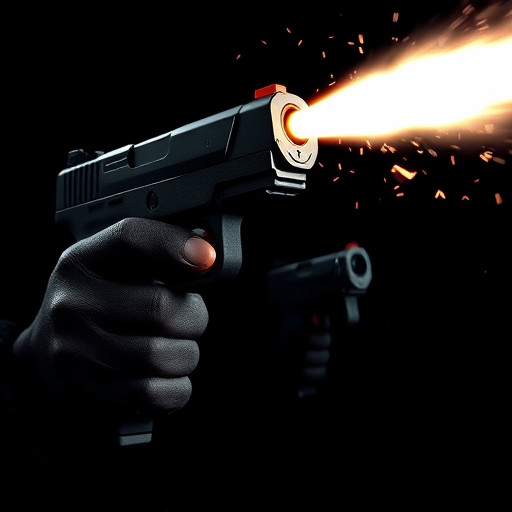Stun guns and tasers, popular for personal defense due to their non-lethal nature, use electrical impulses to temporarily disable targets. Stun guns emit low-voltage, high-current shocks, while tasers fire probes to deliver concentrated pulses. Recent technological advancements have led to improved design, increased power, and extended battery life. Rechargeable stun guns and tasers, a sustainable alternative to disposable batteries, offer enhanced longevity and environmental benefits by eliminating frequent battery replacements.
Discover the power of self-defense with rechargeable taser guns, a modern evolution in personal safety. This comprehensive guide explores the world of stun guns and tasers, their history, and how rechargeability offers enhanced convenience and peace of mind. From understanding the technology to choosing the right device, we break down everything you need to know about these portable defense tools. Uncover the key features that make a rechargeable taser gun an effective and reliable self-defense option.
Understanding Stun Guns and Tasers: A Comprehensive Overview
Stun guns and tasers are non-lethal weapons designed to temporarily incapacitate a target through electrical impulses. They disrupt muscle control by delivering a strong electric current, causing the person to experience a powerful muscle spasm and lose balance or consciousness for a brief period. Stun guns emit a low-voltage, high-current shock, while tasers use two probes connected to a gun-like device that fires them onto the target, delivering a more concentrated electrical pulse.
These devices have gained popularity as personal defense tools due to their non-deadly nature, allowing users to disable attackers without causing permanent harm. They are often used by law enforcement, security personnel, and individuals seeking protection against potential threats. The growing demand for stun guns and tasers has led to advancements in technology, resulting in improved design, increased power, and extended battery life, making them more effective and user-friendly tools for self-defense enthusiasts and professionals alike.
The Evolution of Rechargeable Self-Defense Devices
The evolution of self-defense devices has witnessed a significant shift towards more sustainable and efficient options, marking a departure from traditional non-lethal weapons. Among these innovations, rechargeable stun guns and tasers stand out as game-changers in personal safety. Early models relied on disposable batteries, limiting their longevity and requiring frequent replacements. However, the advent of rechargeable technology has revolutionized these devices, making them more accessible and cost-effective.
Rechargeable stun guns and tasers offer several advantages, catering to a wide range of users from individuals seeking self-defense tools to law enforcement agencies looking for reliable options. The ability to charge these devices eliminates the need for constant battery replacements, ensuring they remain operational when needed most. This evolution not only reduces environmental impact but also provides peace of mind, knowing that your safety device is always ready and waiting.
Features to Consider When Choosing a Rechargeable Taser Gun
When choosing a rechargeable taser gun, several key features should be at the top of your list. First, consider the device’s voltage and current ratings; higher values offer more powerful stun capabilities but also increase safety concerns. A good balance ensures optimal effectiveness while maintaining control. Additionally, weight and size are essential factors for comfort and maneuverability during use. Look for lightweight yet robust designs that fit comfortably in your hand.
Rechargeable options significantly reduce operating costs compared to disposable models. Ensure the taser gun uses widely available and readily accessible charging mechanisms to simplify maintenance. Advanced features like adjustable output levels, multiple firing modes (e.g., single or burst), and self-defense modes can enhance versatility. Always check for safety features such as automatic shut-off and safety locks to prevent accidental discharges.
